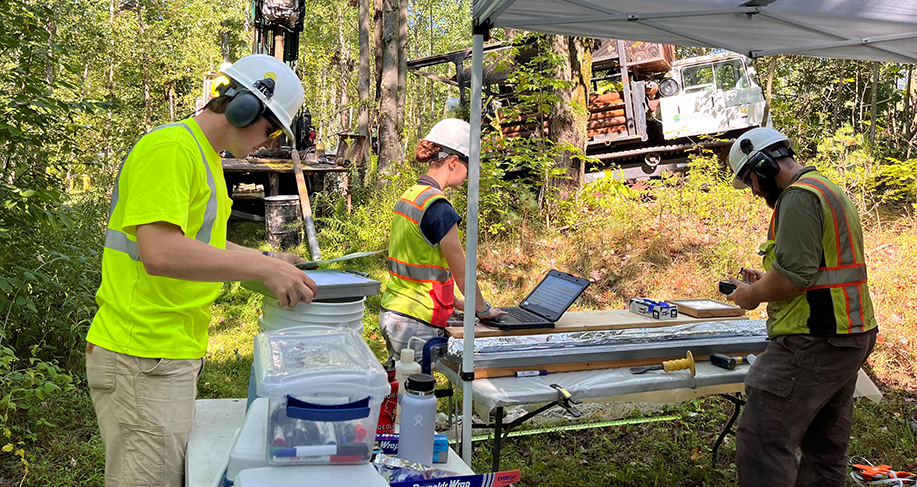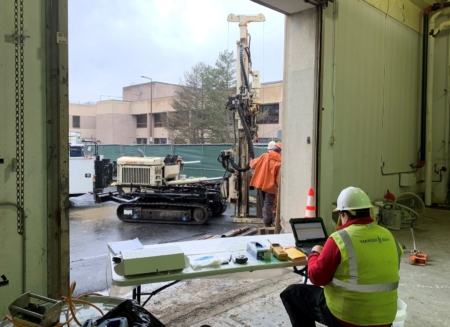Sanborn Head and Pace® Analytical team to provide a proven approach to the investigation of fractured bedrock contamination.
How is COREDFN used?
- Characterization and quantification of contaminant mass in the bedrock matrix
- Predictions of contaminant transport, fate, and mass flux
- Assessment of the effects of matrix diffusion
- Establishment of reasonable remediation thresholds and time frames
- Optimization and prioritization of remediation approach
Conventional bedrock characterization methods focus primarily on contamination in the aqueous phase within fractures. But at most bedrock sites, the majority of contaminant mass occurs within the bedrock matrix. Dr. Beth Parker, director of the Morwick G360 Groundwater Research Group (Morwick G360) and a professor at the University of Guelph, and Dr. Tadeusz Gorecki of the University of Waterloo developed the COREDFN bedrock investigation approach to better quantify the contaminant mass distribution in bedrock and to accelerate the pace at which the analysis can be completed.
The field method includes collection of high-quality bedrock core and careful logging and characterization of the bedrock and fracture network. Based on this logging, high-resolution samples for contaminants and bedrock physical properties are collected, prepared, and preserved for analysis. For volatile organic compounds (VOCs), the laboratory approach includes microwave assisted extraction process followed by analysis by gas chromatography / mass spectrometry.
The combined results inform evaluation of contaminant transport and fate, matrix diffusion, selection and design of remedial strategies, and/or avoiding remediation. In addition, COREDFN can be an important part of managing expectations for remediation and establishing reasonable remediation thresholds and time frames. This approach has been utilized across the U.S. and internationally, including on USEPA Superfund sites.
Sanborn Head and Pace® Analytical are licensed providers of this innovative investigation and analysis approach. While COREDFN has focused on VOCs, Sanborn Head, Pace®, and Morwick G360 have also applied this method to emerging contaminants (e.g., PFAS and 1,4-dioxane).



